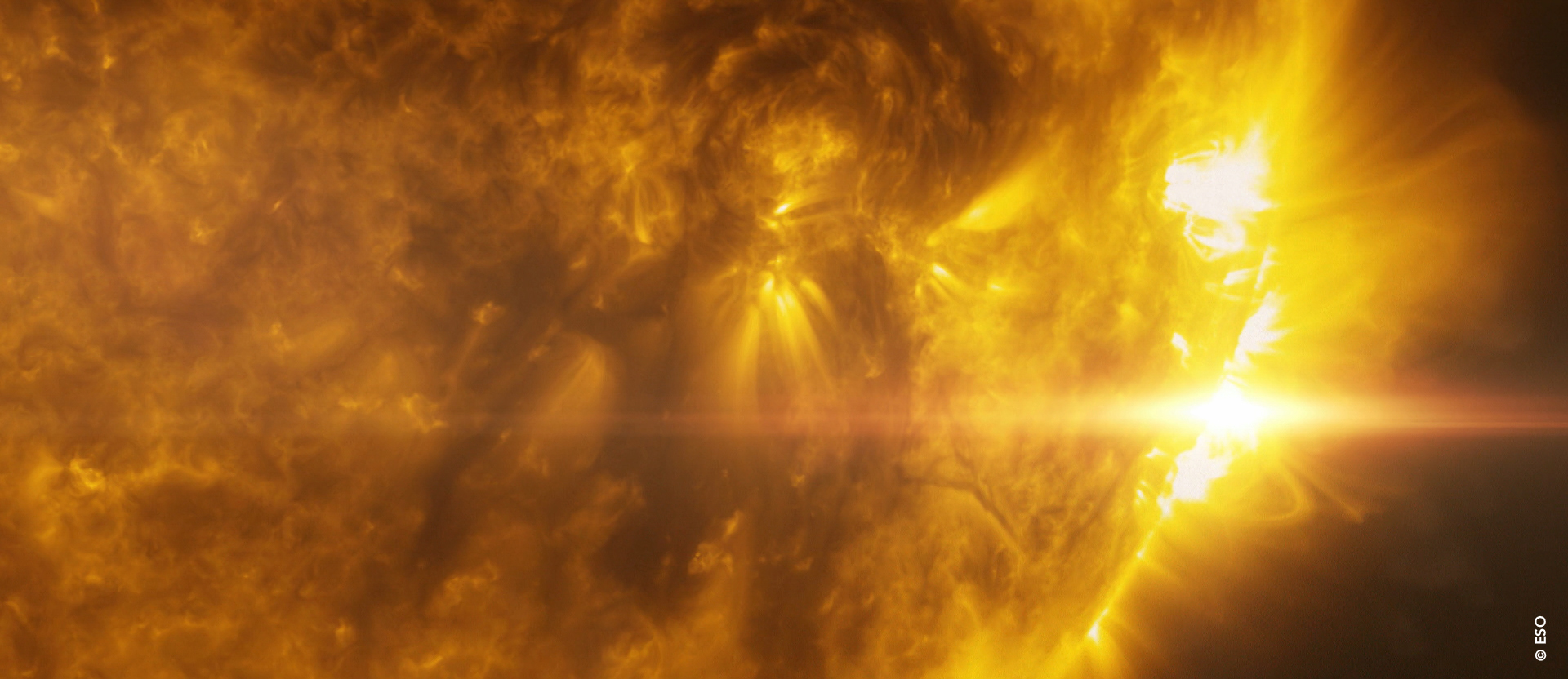Fueled by the sun

Sunlight is made up of photons, tiny particles that make the 150 million kilometer journey from the sun to the earth in a bit more than 8 minutes. About 170 terawatts (TW) of power from the sun reaches the earth’s atmosphere. Roughly 30% of this bounces back out into space, and another approximately 20% is absorbed by the earth’s atmosphere. This still leaves an enormous amount of power, about 90 terawatts, to be absorbed into the land and sea — and potentially exploited by humans.
Truly exploiting sunlight using technology — to create heat, or electricity — is a relatively recent idea. One method we have developed to do this is a technology known as photovoltaics (PV). Using tools called photovoltaic cells, we can convert light into electricity. So, how do PV cells work?
They consist of two layers of semi-conducting silicon. One layer, the so called n-layer, is doped with a chemical element having one electron more than silicon, like phosphorus. Due to this, the layer has a high amount of only loosely bound electrons. The second layer is called the p-layer, and is doped with a chemical element with one electron less than silicon, like boron. This layer wants to collect more electrons to replace the missing electrons. This imbalance of the two layers makes electrons move from the negatively doped layer (the first one) to the positively doped layer (the one with the lack of electrons), thus leading to an electric field between the silicon layers. When sunlight hits the cell, photons — those tiny, space-travelling particles — knock some of the electrons of the semiconductor loose, which then feel the electric field and, finally, lead to the buildup of the electric voltage we can use.
PV cells can be used in numerous applications, ranging from single small cells (to charge calculator or watch batteries), to groups of cells forming panels on rooftops of houses, to groups of panels forming large solar power stations in rural fields or vast expanses of desert.
PV cell technology has, much like any other technology, evolved since its invention. As the technology has improved, costs have decreased, making solar a viable alternative to energy sources such as coal and oil. This leads to economical benefit for us, and benefits for the environment, too: we can rely less on polluting, finite energy sources, while solar energy systems derive from a limitless source, and don’t produce air pollutants or carbon dioxide.
However, solar power also poses some challenges. The amount of sunlight that arrives on the earth’s surface varies, depending on location, time of day, season, and the weather. So, we need storage options — e.g. batteries, which themselves have a limited capacity — to save energy for times when the sun isn’t shining. Conversely, at other, sunnier times, the sun might provide us with excess energy. If this is not stored, or fed into the grid to be used by the network, it may simply go to waste. Also, because the sun doesn't deliver that much energy to any one place at a time, a large surface area is required to collect energy at a useful rate.
But solar power is not limited to rooftop panels providing energy to residential homes, solar power plants generating power for the grid, or smaller-scale solar power, illuminating road signs and lanterns in people’s gardens. It is also utilized in space. Spacecraft and space stations such as the International Space Station (ISS) often use solar panels to generate power. These applications themselves are impressive, but solar power is increasingly being used in even more creative and surprising ways.
One such example can be found in Kerala, India, at Cochin International Airport: India’s seventh busiest airport, with over 1000 flights per week. Until recently, the airport was facing extremely high electricity bills for the power it took from the local grid. When an initial experiment of a 400-panel solar installation on its roof drastically reduced those costs, a further 46,000 solar panels were installed on site, with an energy generating potential of 12 megawatts. Cochin is now the first airport in the world to be completely solar powered. Cochin’s solar plant will produce energy equivalent to power 10,000 homes. This will keep the airport electrically self-sufficient. In fact, the recently completed plant already produces more power than the airport needs, and feeds this excess power back into the grid.
But massive scale projects — such as powering an entire airport — are not the only surprise solar innovation has in store for us. Solar innovation is also happening on a much smaller, everyday level. You know that individual PV cells have long been used to reliably power a calculator or a watch. What if solar could provide you with a portable power source to take with you when you’re on the go? Some inventive companies have already made this idea a reality with solar-powered backpacks. These enviro-friendly mobile power generators are equipped with a lithium battery to store solar energy. This in turn has the capacity to charge mobile phones, MP3 players, cameras, tablets and notebook computers. Extending solar power to the humble backpack is just one idea in a line of innovations dreamt up by humans to exploit the sun’s energy.
The potential the sun’s energy holds for humankind seems to be limitless. If we can effectively meet its challenges, such as developing effective storage, this could truly be the case. As long as the sun keeps burning — which it’s expected to do for about another five billion years – we can continue to use solar energy to power our world in a sustainable, environmentally friendly way.










